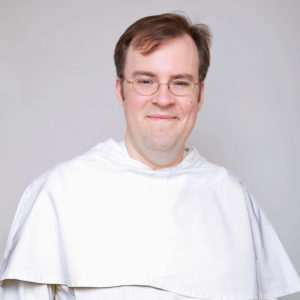In the U.S., the Supreme Court generally has the last word on what law means, and even what the Constitution means. Even more, the only authoritative meaning is what the most recent Supreme Court opinion has said. When I first trained as a lawyer years ago, we still used a set of books called “Shepard’s” to make sure that any court precedent was still valid, and had not been overruled. “Shepardizing” meant to research the history of a legal holding to ensure you were citing the court’s latest word on a given legal matter.
There is a tendency to think that Catholic doctrine works the same way. This Catholic form of “Shepardizing” would be to find the most recent official pronouncements to determine what the Church really teaches on a subject. But in the life of the Church, the passage of time does not make a teaching obsolete. In fact, just the opposite is often true. While the Magisterium of the Church is expressed in any given time through the voice of the then reigning Supreme Pontiff, the Church always speaks through them all. Thus, to fully appreciate the Church’s teaching in our time, it is essential to understand the development which preceded it.
Pope Paul VI’s prescient 1968 encyclical Humane Vitae was in response to the rising controversy of his own time as to the moral acceptability of contraception, even among Christians. Although the document is, in that sense, of its age, it did not arise ex nihilo. In the Church’s development of her theology of the sacrament of matrimony, no figure looms larger than St. Augustine. His work on the goods of marriage established offspring, marital fidelity, and indissolubility as the essential goods of marriage (Augustine, De boni coniugali). A document from the 15th century Council of Florence, Exultate Deo, explicitly adopted the Augustinian formulation: “A triple good is found in matrimony. The first is the begetting of children…” (Exultate Deo, DS 2371). It has remained central to the Church’s explication ever since. Much of the focus of the Church over the centuries that followed, especially in response to the Protestant challenge, has been on the last two essential goods: fidelity and indissolubility.
In 1930, however, the Church began to focus again on the good of children, and the nature of procreation within married life. In that year, the leaders of the Church of England (Anglicans), gathering at Lambeth, for the first time declared that married couples could morally use contraception. Later that same year, Pope Pius XI issued his important document on marriage, Casti Connubii. There, he provided an extensive discussion of the blessing of children within married life. His writings became the Magisterial foundation for the discussion of the sacrament of marriage both by the Second Vatican Council and later Popes.
Pope Pius XI began his encyclical by reaffirming the Church’s “immutable and inviolable fundamental doctrine” on the divine institution of marriage. God is the divine author of all marriages, not just Catholic ones: “From God comes the very institution of marriage, the ends for which it was instituted, the laws that govern it, the blessings that flow from it…” Casti Connubii, 9). Even in this divinely created institution, however, man participates and cooperates. In the couples’ consent to each other, “the human will, too, enters into it and performs a most noble part” (Casti Connubii, 9).
It is in marriage’s greatest fruit that one sees man’s highest participation with God’s creative act, namely the bearing of children: “[H)ow great a gift of divine goodness and how remarkable a fruit of marriage are children born by the omnipotent power of God through the cooperation of those bound in wedlock” (Casti Connubii, 12). But the cooperation of parents in the work of God does not end with the birth of the child, it only begins there. Parents live out their vocation as disciples of Christ when they bring their children to the salvific font of baptism. Parents bring children into the world “that they may be worshippers of God, that they may know Him and love Him and finally enjoy Him forever in heaven” (Casti Connubii, 12).
Yet even in the 1930s many argued that the good of children in marriage was, in fact, a burden and an evil that must be alleviated. Pope Pius XI castigated those who complained of being “weary of children.” For them, offspring were the “disagreeable burden” of marriage, either because they wish to “gratify their desires without their consequent burden” or because of “difficulties whether on the part of the mother or on the part of family circumstances…” (Casti Connubii, 53).
Marriage and sexuality are God’s creations for man, not man’s invention to rewrite as he wills. We know not solely by revelation but also by reason, that “the conjugal act is destined primarily by nature for the begetting of children” (Casti Connubii, 54). And in words that presciently foreshadowed Pope Paul VI’s teaching in Humanae Vitae almost 40 years later,
Any use whatsoever of matrimony exercised in such a way that the act is deliberately frustrated in its natural power to generate life is an offense against the law of God and of nature, and those who indulge in such are branded with the guilt of a grave sin (Casti Connubii, 56).
This holds even if in some cases it is perceived as hard or difficult: “[N]o reason, however grave, may be put forward by which anything intrinsically against nature may become conformable to nature and morally good” (Casti Connubii, 54). Neither the best of motives nor even the most invincible of ignorance can convert an objectively evil act into a good one.
The Church’s teaching on contraception, finding its origin in St. Augustine’s teaching on the good of children in marriage, is inextricably linked with Church’s understanding of the God-given dignity of human life.
God speaks to us not only in Sacred Scripture, but also in the good news handed to us from the Apostles (1 Thess 2:13), that is Sacred Tradition and the Magisterium of the Church. As we prepare to celebrate the 50th anniversary of Humanae Vitae, let us receive with joy the teaching that was passed on to us. (1 Cor 15:3) But in taking up again this important document of Paul VI, we must also hear the voice of Peter throughout the centuries on the dignity of matrimony. Thus, we engage in a truly Catholic “Shepherdizing” in our proclamation of the truth of contraception by receiving the words of so many Chief Shepherds of the Church, so that the minds of the people today may be fully “illuminated with the true doctrine of Christ” (Casti Connubii, 2)
 Fr. Pius Pietrzyk, OP, a priest of the Order of Preachers (the “Dominicans”), currently serves as the Chairman of the Department of Pastoral Studies and Assistant Professor of Canon Law at St. Patrick Seminary in Menlo Park, CA. He also serves as editor of the Angelicum journal, the scholarly journal of the Pontifical University of St. Thomas Aquinas in Rome. He is a member of the Board of Directors of The Legal Services Corporation, having been nominated to the position by the President of the United States and unanimously confirmed by the U.S. Senate in 2010. Ordained to the priesthood in 2008, Fr. Pius has a License in Theology (STL) from the Pontifical Faculty of the Immaculate Conception (Washington, DC), a Doctoral Degree in Canon Law (JCD) from the Pontifical University of St. Thomas Aquinas (Rome), and a civil law degree (JD) from the University of Chicago.
Fr. Pius Pietrzyk, OP, a priest of the Order of Preachers (the “Dominicans”), currently serves as the Chairman of the Department of Pastoral Studies and Assistant Professor of Canon Law at St. Patrick Seminary in Menlo Park, CA. He also serves as editor of the Angelicum journal, the scholarly journal of the Pontifical University of St. Thomas Aquinas in Rome. He is a member of the Board of Directors of The Legal Services Corporation, having been nominated to the position by the President of the United States and unanimously confirmed by the U.S. Senate in 2010. Ordained to the priesthood in 2008, Fr. Pius has a License in Theology (STL) from the Pontifical Faculty of the Immaculate Conception (Washington, DC), a Doctoral Degree in Canon Law (JCD) from the Pontifical University of St. Thomas Aquinas (Rome), and a civil law degree (JD) from the University of Chicago.

